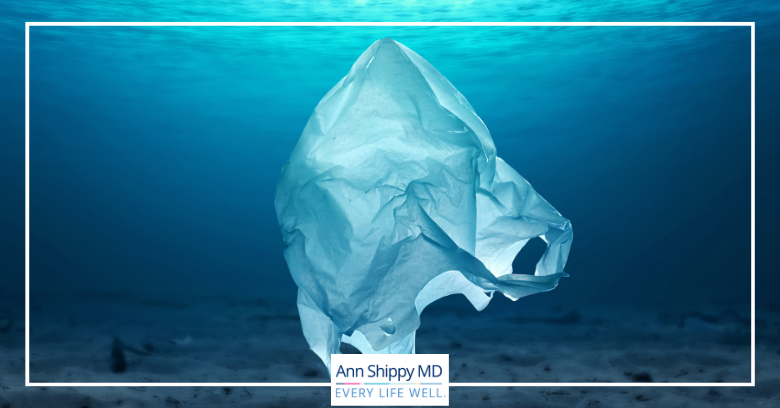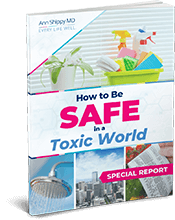Plastic Pollution – The Impacts of Single-use Plastics And What You Can Do
The amount of plastic on the earth is now greater than all global living biomass combined. To put this in perspective, this is equivalent to each of the 7 billion people on the planet producing a mass of plastic that is greater than our body weight every week.
We often don’t think about our plastic use. It is a part of everyday life. We grab a cup of coffee to go, buy pre-made food, wear disposable face masks, and receive shipments of plastic goods, packaged in plastic, to our homes.
Plastic is such a part of our everyday lives, that to not use plastic feels like a great deal of thought and effort.
It’s important to consider plastic production because this amount of plastic use is not without consequences for the earth, animals, and our human bodies, which show great sensitivity to this chemical. With plastic production predicted to quadruple in the next 30 years, we have no time to waste.
This article addresses the health concerns of plastics, particularly single-use plastics.
Keep reading to learn more about:
- What single-use plastics are and why they are a huge global problem
- Why recycling won’t save us
- How you can reduce your plastic use and promote change
The Problem With Single-use Plastics
Single-use plastics are exactly what they sound like. They are plastics produced to be used just one time and then discarded. Often, these plastics are disposed of in mere minutes and persist on the planet for hundreds and thousands of years.
For example, you might use a plastic bag (or 10) to carry your groceries from your car into your home and then throw the bags away. You may use a plastic cup and straw for a single beverage and then discard them.
Types of single-use plastic
- Plastic grocery bags
- Plastic produce bags
- Plastic straws
- Plastic cups
- Paper cups lined with plastic
- Plastic lids
- Plastic bottles and lids
- Plastic take-out containers, food containers
- Styrofoam cups and take-out containers
- Styrofoam packing materials
- Plastic wrap
- Plastic cutlery
- Six pack rings
- Plastic packing materials
- Plastic shipping envelopes
- Cigarette butts
- Disposable face masks
Let’s talk about facemasks a little more. The medical masks that many of us used (and still use) for protection from COVID-19 or other infections are, sadly, made from plastic.
The use of such masks was estimated to be around 129 billion per month – that was 3 million used every minute! And, although you might wear these for an entire day or use them for a few trips out of the home, they are all discarded.
Disposable masks are not recyclable. They end up in the landfill or as litter and do not biodegrade. They simply break down into smaller particles that pollute the oceans and waterways and find their way into animals (and us), contributing to our toxic burden and disease.
These microplastics contain endocrine disruptors that wreak havoc on our hormones. Read more about microplastics and their impact on our health here.
What About Recycling?
Okay, so facemasks can’t be recycled, but what about the other single-use plastics? Doesn’t recycling combat the issue?
Sadly, recycling is not enough. According to the US Environmental Protection Agency 2018 data, only 8.7 percent of all plastics made are recycled.
In 2018, the US produced 35.7 million tons of plastic and 14.5 million tons of that was from packaging and containers alone. Twenty-seven million tons went to landfills, accounting for 18.5 percent of all municipal solid waste.
What’s more, is that a National Public Radio and Frontline 2020 investigation revealed that the petroleum and plastics industries pay for and promote recycling campaigns designed to mislead consumers about recycling.
These campaigns make consumers feel they are doing a good and responsible thing by recycling. The campaigns promote the message that plastics aren’t a big issue, which justifies the continued, and increased, production of single-use plastic.
This focus on recycling actually sells more plastic and benefits the corporations who produce it as well as the oil and gas industry that provide the raw materials for plastic production. This has been going on for decades!
What You Can Do To Decrease Plastic Use
With so much plastic being produced and so much more on the horizon, we need large-scale change to really get a hold of this problem. We need to stop building new plastic factories and put laws in place to limit and prohibit the use of such products.
We know that large-scale action can work. Many communities including Seattle, WA, and Berkeley, CA have banned plastic straws.
New York state and Hawaii have recently banned plastic bags as well as many towns and cities across the country. California’s plastic bag ban went into effect in 2014 decreasing use by 85 percent.
I was just in Tanzania where they have banned all single-use plastic bags. It got me to look at how I pack things that might leak and organize things. REI carried bags that were great for reusing and packing.
On the individual level, some awareness and new habits will greatly reduce your personal plastic consumption and plastic waste. Being completely zero-waste or plastic-free may not be accessible to all of us, but the more we do, the more we influence our friends, communities, and businesses, and we build a movement.
Here are some action steps you can take, right away, to curb your plastic consumption and decrease your exposure to plastics and associated toxins:
1. Decline plastic straws. Go without or use your own reusable stainless steel, glass or silicone straw.
2. Bring your own cup or water bottle. Glass, ceramic or stainless steel reusable water bottles and coffee cups will save thousands of plastic bottles and cups over their lifetime (plus it is a healthier option). Keep one in your bag and another in your car so you always have one with you. These make great gifts too.
3. Bring your own container to restaurants. Ask for your to-go meal or leftovers to be packaged in your own container or package yourself when possible. An empty glass jar with a tight-fitting lid works great for this.
4. Cook more at home with whole food ingredients. When we cook more and opt for fewer convenience items, we often save a lot of plastic waste as well. Plus, you get all of the benefits, including those for your microbiome and metabolic health, when eating this way. New to whole-food eating? Start here.
5. Bring your own reusable bags when you shop. This goes for grocery bags and produce bags. Use your own bags at retail stores or decline a bag if you carry or cart your items to your car or bike.
6. Buy in bulk. Dry foods, cleaning products, shampoos, and more are often available in bulk from natural food stores or cooperatives. Just bring your own reusable container, and get what you need. This is a great way to save on packaging and money too.
7. Choose products with less packaging or non-plastic packaging. Many small companies are responding to the plastic pollution crisis by finding creative ways to package and sip products without plastic. When you find companies with a zero-waste mission, continue to support them and ask your favorite companies to do the same.
8. Choose natural fiber clothing and textiles. Polyester, nylon and other synthetic fabrics are made out of plastic.
9. Reuse the plastic that you already have. For example, you can reuse plastic produce bags and wash out Ziplock bags for reuse. Get the most use out of what you already have and then when you need to replace an item, upgrade to a non-plastic reusable option.
10. First reduce and reuse, then recycle. Plastic bottles and food containers are probably the easiest to recycle if you have recycling pick-up or drop-off stations in your community. But, a lot of other plastics are recyclable as well. It might take a bit more effort, but toothbrushes, bottles from bathroom products, Styrofoam and more may be recyclable where you are too. Check out TerraCycle for more info.
Most of us don’t want to live in a polluted world or have the health consequences that come from plastics in the environment. It’s up to all of us to do our part and push for the system-wide change that we need.
By sharing this information, we all become a little more empowered and clear about the actions to take in our own lives. What is one thing that you can do today to reduce your plastic use?
References
- https://pubmed.ncbi.nlm.nih.gov/33299177/
- https://www.ncbi.nlm.nih.gov/pmc/articles/PMC7930518/
- https://www.epa.gov/facts-and-figures-about-materials-waste-and-recycling/plastics-material-specific-data
- https://www.pbs.org/wgbh/frontline/announcement/frontline-and-npr-investigate-how-the-plastics-industry-used-recycling-to-help-sell-more-plastic/













